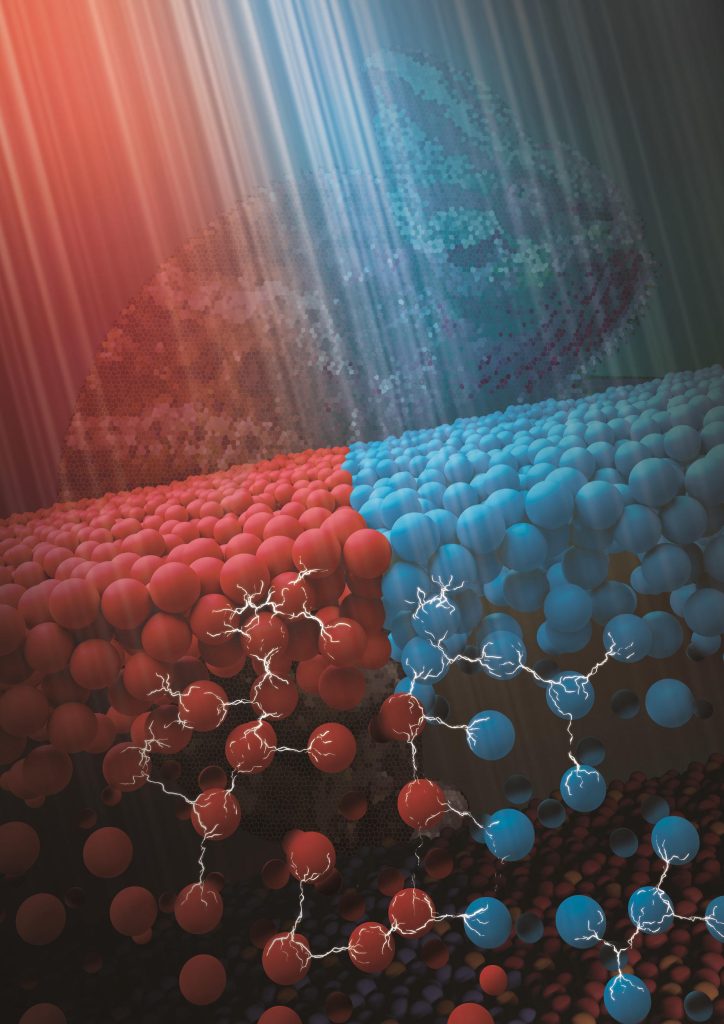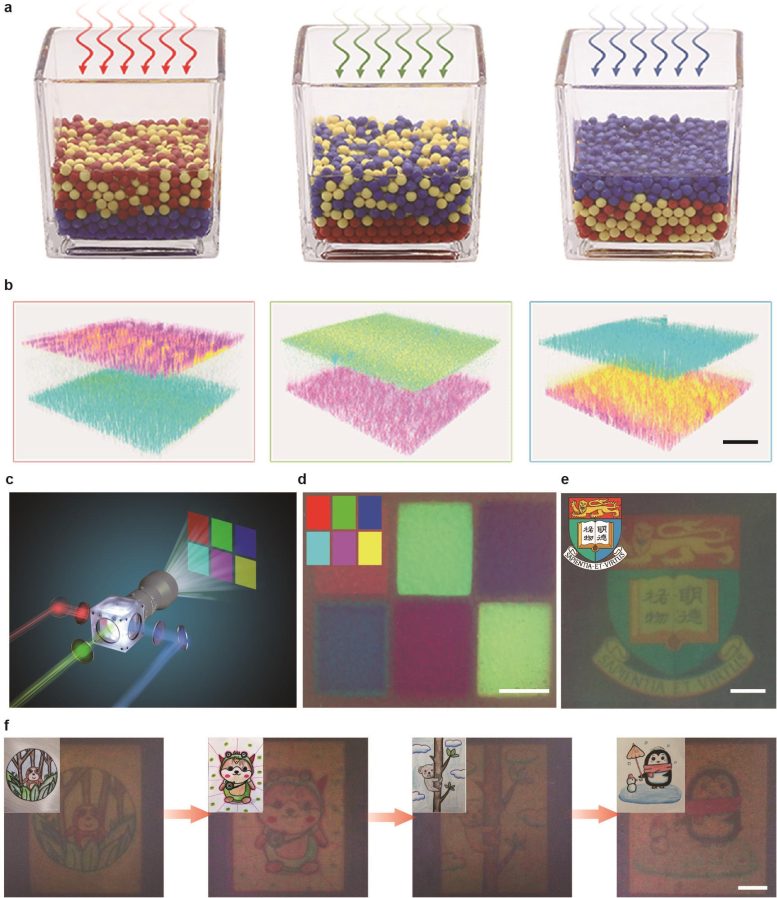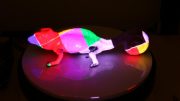
Novel ink composed of colorful microbeads adapts to the appearance of received light by light-driven separation. Credit: The University of Hong Kong
The skin of cephalopods (animals with tentacles attached to the head) exhibits an extraordinary capacity for camouflage in the wild. Their skin is composed of clusters of pigments capable of detecting shifts in the environmental light settings and altering their visual aspect by way of pigment cells. Despite its complexity, this capacity for color change relies fundamentally on a mechanical mechanism, where pigment particles are manipulated – either folded or unfolded – under the directive of radial muscles.
This remarkable natural phenomenon has served as the inspiration for Dr. Jinyao Tang and his research team from the Department of Chemistry at The University of Hong Kong (HKU). Collaborating with scientists from the Hong Kong University of Science and Technology and Xiamen University, they have developed an innovative, wavelength-selective intelligent colloid system, facilitating light-controlled multi-dimensional phase segregation.
The team forms dynamic photochromic nanoclusters by mixing cyan, magenta, and yellow microbeads, achieving photochromism on a macro scale. This macroscopic photochromism relies on light-induced vertical phase stratification in the active microbeads mixture, resulting in the enrichment of colored microbeads corresponding to the incident spectrum.
Unlike existing color-changing materials, this new photochromic colloidal swarm relies on rearranging existing pigments rather than generating new chromophores in situ and is, therefore, more reliable and programmable. Their findings provide a simple method for applications such as electronic ink, displays, and active optical camouflage, representing a major breakthrough in the field of active matter. The research result is recently published in the prestigious academic journal Nature.

Three-dimensional phase segregation and photochromic colloidal swarm. a, The Illustration of spectral sensitive layered segregation in the ternary colloidal system, where different illumination spectra resulted in distinctive vertical stratification. b, The 3D distribution of ternary colloidal particles as imaged by confocal microscope after red, green, and blue light illumination. The SQ2, LEG4, and L0 sensitized TiO2 colloids are represented in cyan, magenta, and yellow, respectively. Scale bar: 50 mm. c, Modified projector is used to project designed color images. d, Six color blocks emerged on the surface of photochromic ink after 2 min exposure. Inset: the projected pattern. Scale bar: 2 mm. e, The university logo emerged on the surface of photochromic ink after 2 min exposure. Scale bar: 2 mm. f, Sequential patterning of the photochromic ink with different color paintings with 2 min exposure. Inset: the original projected patterns. Scale bar: 2 mm. Credit: The University of Hong Kong
Self-actuated active particles are micro/nanoparticles that mimic the directional swimming of microorganisms in liquid. Recently, they have attracted significant attention in nanoscience and non-equilibrium physics and are being developed for potential biomedical applications. One of the main research objectives of active particles is to develop medical micro/nanorobots based on these particles for drug delivery and non-invasive surgery. However, the structure of active particles is very simple, and their driving mechanism and environment perception are significantly limited.
In particular, the size and relatively simple structure of the individual micro/nano active particles restrict the complexity of implementing functions on their body. The challenge and key to realizing the future application is how to make active particles with intelligent characteristics despite their simple structure.
Light-powered microswimmers, a type of self-actuated active particles, have been recently developed for the purpose of creating controllable nanorobot, which offers potential for biomedical application and functional novel materials as the swimmer activity, alignment direction, and interparticle interaction can be readily modulated with incident light. On the other hand, light not only induces photosensitive motion in microswimmers but also changes the effective interaction between particles.
For example, photocatalytic reactions can change the local chemical gradient field, which in turn affects the movement trajectory of neighboring particles through the diffusion swimming effect, resulting in long-range attraction or repulsion.
In this work, Tang’s team designed a simple wavelength-selective TiO2 active microbeads system based on their previous research on light-powered microswimmers. Upon photoexcitation, the redox reaction on TiO2 particles generates a chemical gradient, which tunes the effective particle-particle interaction.
That is, the particle-particle interaction can be controlled by combining incident light of different wavelengths and intensities. TiO2 microbeads with different photosensitive activities can be formed by selecting dye sensitization codes with different spectral characteristics. By mixing several otherwise identical TiO2 microbead species loaded with dyes of different absorption spectra and adjusting the incident light spectra, the on-demand particle segregation is realized.
The purpose of realizing particle phase segregation is to control the particle aggregation and dispersion in liquid at both micro and macro levels. Effectively, this resulted in a novel photoresponsive ink by mixing microbeads with different photo-sensitivity that may be applied to electronic paper. The principle is similar to the pigment clusters in the skin of cephalopods that can sense the light condition of the environment and change the appearance of surrounding pigment cells through their corresponding actions.
‘The research findings have contributed significantly to advancing our knowledge of swarm intelligence in artificial active materials and have paved the way for designing innovative active smart materials. With this breakthrough, we anticipate the development of programmable photochromic ink that could be utilized in various applications such as e-ink, display ink, and even active optical camouflage ink,’ Dr Jinyao Tang concluded.
Reference: “Photochromism from wavelength-selective colloidal phase segregation” by Jing Zheng, Jingyuan Chen, Yakang Jin, Yan Wen, Yijiang Mu, Changjin Wu, Yufeng Wang, Penger Tong, Zhigang Li, Xu Hou and Jinyao Tang, 17 May 2023, Nature.
DOI: 10.1038/s41586-023-05873-4









Be the first to comment on "The Future of Camouflage: Mimicking Cephalopods’ Color-Changing Ability"